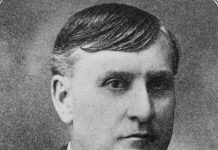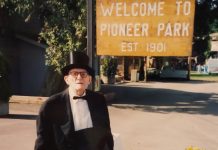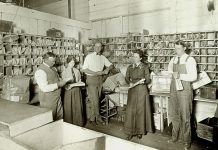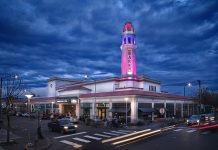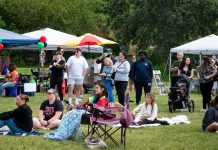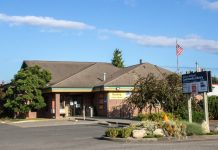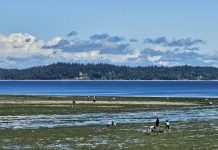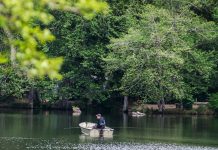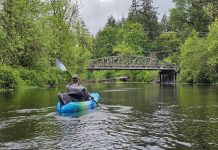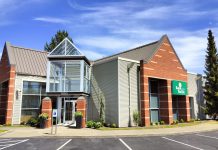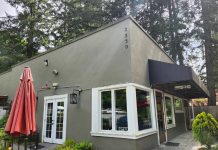
Walk around downtown Bellingham and you’ll notice right away the city is full of interesting architectural details. Old buildings with long-gone owners house trendy boutiques and chic restaurants now, but there’s a yesteryear story, and it’s one you won’t know about unless you take the Downtown Bellingham Historic Tour.
 The city launched this self-guided history tour for pedestrians in 2015, covering some 45 buildings and sites that date back to the 1890s. The tour goes back to the first contact between the Nooksack and Lummi tribes and white settlers in 1853, when tidal flats and rocky outcroppings marked the landscape.
The city launched this self-guided history tour for pedestrians in 2015, covering some 45 buildings and sites that date back to the 1890s. The tour goes back to the first contact between the Nooksack and Lummi tribes and white settlers in 1853, when tidal flats and rocky outcroppings marked the landscape.
Though they’ve long been filled and urbanized, much of the architecture of the old buildings remains the same. The dramatic peaks of Old City Hall (now Whatcom Museum), for example, its 1892 origins carved into one of its turrets, are still a magnificent landmark. At each site there’s interesting detail about the architecture and politics of the time.
During the tour, participants learn that Old City Hall, designed by architect Alfred Lee, was built of brick and Chuckanut. “It was an extravagant Victorian meant to display civic superiority over the rival town of Fairhaven.” But times changed and as the building was nearing its completion, America was sinking into a depression. When the first council meeting was held in the new City Hall in May 1893, the tower had no clock and the interior was still unfinished.
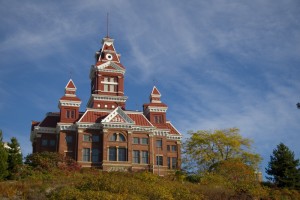
On Holly Street, at the corner of Commercial, we look up at the Romanesque architecture of the Red Front Building, erected in 1900 as a clothing store. Its upper floors operated as the Savoy Hotel from 1915 until the 1960s, and engraved in stone above the building’s front column are the words “Canoe St.,” which mark a time prior to the Commercial street name.
The five-story Chicago style 1912 Bellingham National Bank was once the city’s most prestigious business address. It boasts a semi-circular fanlight over the business lobby entrance and shallow, black cast iron bays, decorative features unusual for Bellingham at the time. Today it’s home to Key Bank.
Pickett Bridge is a rich historical site, too. The unassuming 60-foot long concrete arch on Dupont street crosses Whatcom Creek and was named for Captain George E. Pickett. In 1856, the US Army sent him to oversee the construction of a fort on Bellingham Bay, to protect the four pioneer bay towns against Indian raiders from the north. The bridge he built in 1857 was replaced in 1920 and Pickett’s house, constructed with boards from the Roeder-Peabody mill, is still standing at 910 Bancroft Street.
One site I found particularly fascinating during the tour is a historic photograph of Whatcom Beach at what is today’s Maritime Heritage Park. It was taken in the mid-1890s and depicts the tents and canoes of Lummi and Nooksack Tribes, both of whom used the beach as a seasonal fishing camp. The beach was at the base of a bluff directly below Old City Hall, and it is quite amazing to stand at the same site and compare the 1890s image to the view today, since it’s so vastly different.
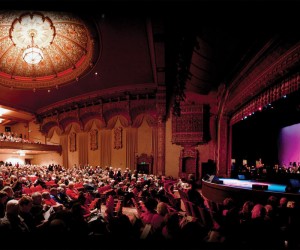
The Downtown Bellingham Historic Tour is filled with fascinating historical nuggets, a journey in which past and present intersect vividly.
To enjoy the tour to its full extent, all you’ll need are a few things. If you have a Smart Phone, download the free audio/mobile tour by visiting the City of Bellingham online. If not, print a copy of the booklet online or purchase a bound version from the Bellingham Whatcom County Tourism Office at 1306 Commercial Street, the Whatcom Museum Gift Shop or the Bureau of Historical Investigation. Ensure you’re wearing comfortable footwear, give yourself at least a couple of hours and determine which route you want to take: the 1.25-mile Short Loop or the 2-mile Long Loop.
For more information and to start planning your tour, visit the City of Bellingham online.






